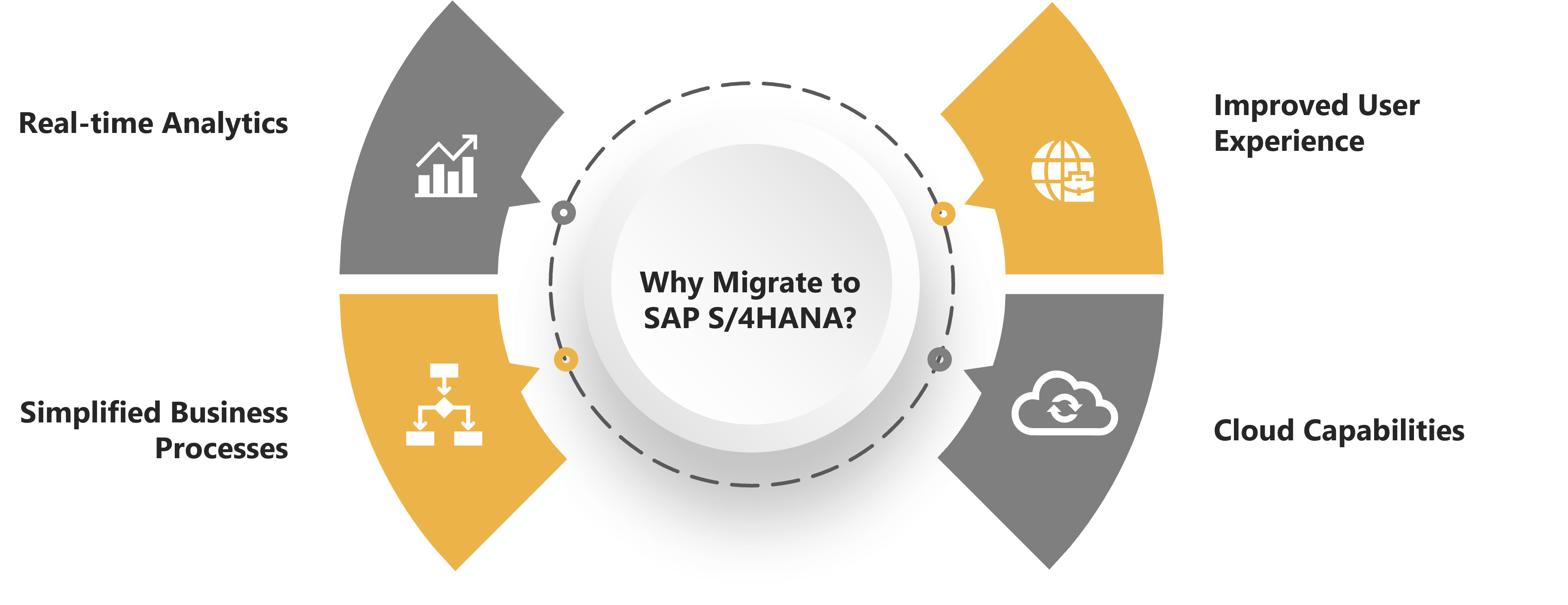Navigating Smoothly: A Comprehensive Guide to SAP Migration

Introduction
SAP is a terminology that is being used by multiple organizations to harness the data power & sort out their operations. Staying prominent & competitive is highly important & SAP is at the forefront of that evolution. But tech is a thing that keeps on changing as per the trend & that is why SAP Migration is essential.
SAP migration can be put simply, the procedure of moving an already existing SAP environment from one platform to another. It’s a highly important & tedious task that can significantly impact an organization’s efficiency, cost-effectiveness & competitiveness. This blog highlights the various features of SAP migration, its usefulness, challenges & main considerations.
Why SAP Migration Matters?
- => Adaptation to Changing Business Needs: Over time, an organization's business processes and requirements may change. SAP migration allows businesses to adapt their SAP systems to meet these evolving needs.
- => Cost Optimization: Migrating to a more efficient SAP infrastructure can result in cost savings through improved performance and reduced maintenance expenses.
- => Improved Performance: Newer hardware, software, and infrastructure can enhance the performance and reliability of SAP systems, ensuring that they run smoothly and efficiently.
- => Security and Compliance: Staying up to date with the latest security standards and compliance regulations is crucial. Migrating to a more secure environment helps protect sensitive data and ensures compliance.
- => Integration with Modern Technologies: SAP migration can facilitate integration with emerging technologies such as cloud computing, IoT (Internet of Things), and AI (Artificial Intelligence), unlocking new possibilities for innovation.
What are the challenges of migrating?
SAP migration is a complex process that has several challenges, including:
- => Data Migration: Ensuring the accurate and secure transfer of data is a critical aspect of SAP migration. Data loss or corruption can lead to operational disruptions and financial losses.
- => Downtime: Minimizing downtime during migration is challenging but essential to maintain business continuity. Downtime can lead to lost revenue and decreased customer satisfaction.
- => Compatibility Issues: Compatibility between different SAP versions and infrastructure components can be a significant hurdle. Ensuring that all components work seamlessly after migration is crucial.
- => Resource Allocation: SAP migration requires a considerable amount of time, manpower, and resources. Organizations must carefully plan and allocate resources to minimize disruption.
- => Testing and Validation: Thorough testing and validation are essential to identify and rectify any issues that may arise post-migration. Inadequate testing can lead to post-migration problems.
Best Practices for SAP Migration
Some important SAP migration service practices include-
- => Comprehensive Planning: Develop a detailed migration plan that includes a timeline, resource allocation, risk assessment, and contingency plans.
- => Data Backup and Recovery: Ensure robust data backup and recovery mechanisms are in place to prevent data loss during migration.
- => Testing and Validation: Conduct extensive testing and validation to identify and resolve issues before they impact production systems.
- => Training and Education: Train staff on the new SAP environment to maximize efficiency and minimize user-related issues.
- Continuous Monitoring: Implement monitoring and alerting systems to proactively identify and address performance or security issues.
- => Documentation: Maintain comprehensive documentation of the entire migration process for future reference and audits.
Key Considerations
- => Choose the Right Migration Strategy: Decide between rehosting, re-platforming, refactoring, or rearchitecting your SAP environment based on your specific needs and goals.
- => Cloud or On-Premises: Determine whether a cloud-based SAP solution or an on-premises setup best suits your organization's requirements.
- => Vendor and Partner Selection: Select experienced vendors and partners who specialize in SAP migration and have a track record of successful projects.
- => Scalability: Consider future growth when planning your SAP migration to ensure your system can scale to accommodate increasing demands.
Concluding Off
SAP data migration service can significantly impact an organization's efficiency, cost-effectiveness, and competitiveness. While it poses challenges, careful planning, execution, and adherence to best practices can help organizations navigate the complexities of SAP migration successfully. By choosing the right strategy, considering cloud options, and ensuring data security, businesses can harness the full potential of SAP to drive innovation and growth in an ever-changing business landscape.

Comment